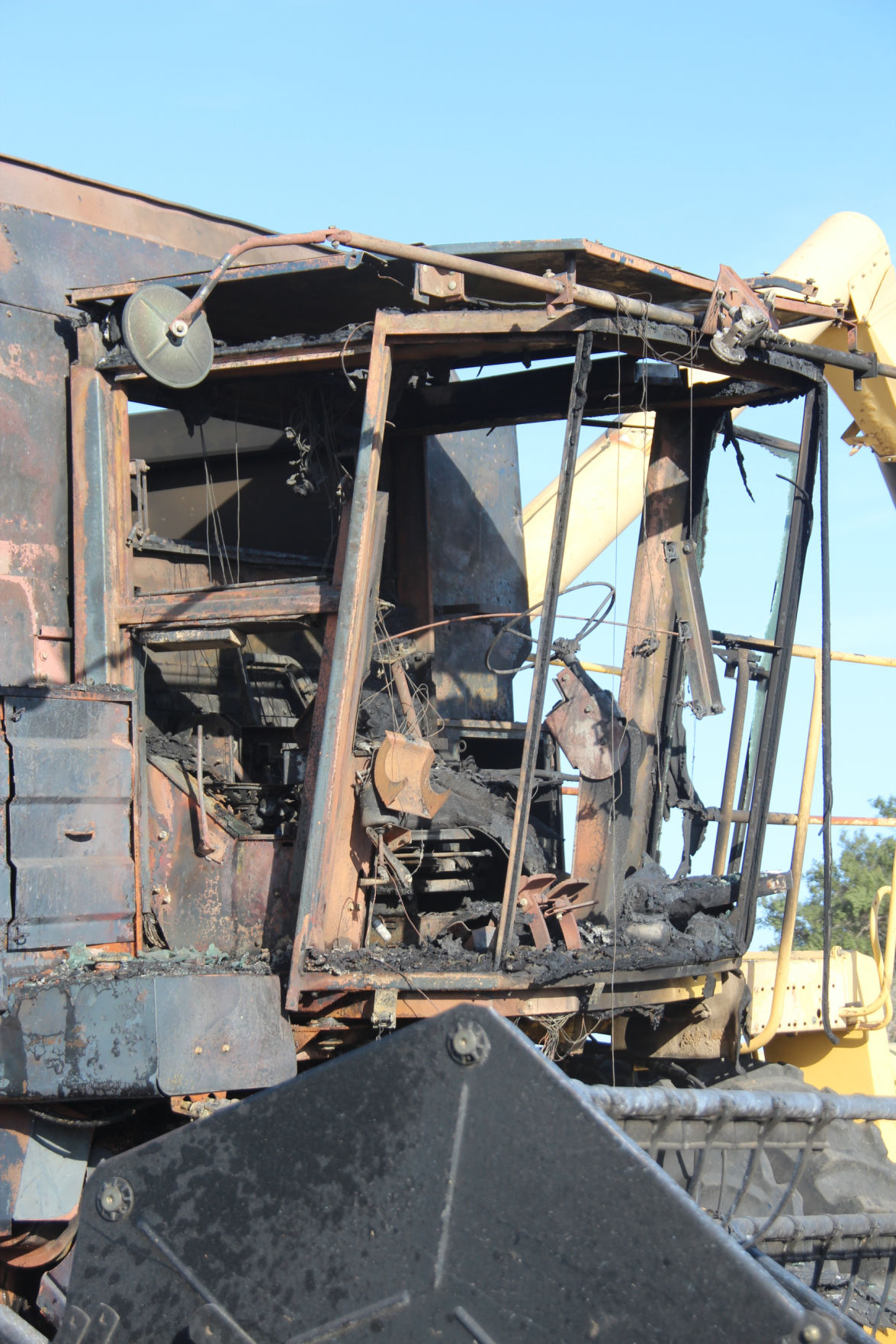Your equipment on a farm is dear to you. One of the biggest possible property loss prevention steps to take is to make sure that your equipment is maintained and protected in case of fire.
Prevent your equipment from catching fire, be proactive:
- Regular maintenance: Ensure that your combine is well-maintained and serviced regularly. This includes inspecting and cleaning the engine, electrical system, fuel lines, and exhaust system. Address any potential issues promptly.
- Keep it clean: Remove dust, debris, and crop residues from equipment after each use. Pay special attention to areas around the engine and exhaust components as they can become hot during operation.
- Check for leaks: Regularly inspect the fuel lines, hydraulic lines, and other fluid systems for any signs of leakage. Address any leaks immediately and replace damaged or worn-out components.
- Proper fueling: Be cautious when refueling. Turn off the engine and let it cool down before adding fuel. Avoid overfilling the fuel tank and wipe away any spills to prevent fuel accumulation.
- Avoid hot surfaces: During operation, certain components of the combine, such as the engine, exhaust, and bearings, can become very hot. Avoid touching or placing flammable materials near these hot surfaces.
- Monitor temperature: Keep an eye on the temperature gauges or warning lights on your combine’s dashboard. If you notice any abnormal temperature readings or warning signs, shut down the machine and investigate the cause before resuming operation.
- Stay alert: When operating equipment, remain attentive and vigilant. Watch for any signs of smoke, unusual smells, or other indicators of a potential fire. If you notice anything suspicious, stop the machine immediately and investigate the source.
- Training and education: Ensure that you and anyone operating the combine are well-trained in its operation and safety protocols. Stay informed about best practices for fire prevention and response.
- Fire extinguisher: Always have a fully charged fire extinguisher on board your combine. Make sure you know how to operate it effectively. Choose an appropriate type of fire extinguisher suitable for extinguishing different types of fires, including electrical and fuel-based fires.
Check out this video on preventive fire maintenance.
Automated fire suppression systems and fire extinguishers:
Fire suppression systems in the engine bay of farm equipment can provide an additional layer of protection against fires that may occur due to mechanical failures, fuel leaks, or other ignition sources. Here are some considerations for implementing fire suppression in the engine bay of farm equipment:
- Activation and control: Determine the method of activation and control for the fire suppression system. It can be configured for automatic activation upon fire detection or manual activation by the operator. Consider incorporating manual override capabilities to allow operators to take immediate action in case of false alarms or situations where fire suppression is not required.
- Automatic detection: Install a fire detection system in the engine bay that can quickly sense heat, flames, or smoke. These systems can be designed to automatically initiate the fire suppression process when a fire is detected.
- Fire suppression agent: Choose a suitable fire suppression agent for the engine bay. Common options include dry chemical agents, such as ABC powder or BC powder, or clean agents like FM-200 or Novec 1230. Consult with fire safety professionals or equipment manufacturers to determine the most appropriate agent for your specific equipment and its potential fire risks.
- Design and installation: Work with a professional or a qualified technician to design and install the fire extinguisher system. The system should be securely mounted and protected from damage during normal equipment operation. It should be easily accessible and have clear instructions for activation. Work with professionals experienced in fire suppression to ensure that the response plan is tailored to the hazards for your farm equipment. Consider factors such as the size and configuration of the danger points, as well as potential fire hazards and obstructions that need to be addressed.
- Maintenance and inspection: Regularly inspect and maintain the fire extinguisher system to ensure it is in proper working condition. Follow manufacturer guidelines for maintenance schedules, inspections, and refills. Check for any damage, leaks, or expired extinguishing agents and address any issues promptly.
- Operator training: Provide thorough training to equipment operators on the location, operation, and limitations of the built-in fire extinguisher system. Ensure they understand how to properly activate and use the system in case of a fire. Additionally, train operators on general fire safety practices and protocols.
- Proper installation: Follow manufacturer guidelines and work with qualified technicians to install the fire suppression system correctly. Ensure that nozzles or dispensers are strategically placed to cover critical areas of the engine bay and any potential ignition sources. Proper mounting and securing of the system components are also essential to prevent damage during equipment operation.
Consult with fire safety professionals, equipment manufacturers, or experts in the field to ensure that the fire suppression system meets safety standards, regulations, and best practices for your specific farm equipment and operating environment.
Remember that the effectiveness of built-in fire protection systems depends on their proper design, installation, maintenance, and operator training. It is advisable to consult with experts, including fire safety professionals or equipment manufacturers, to ensure compliance with safety regulations and best practices.




